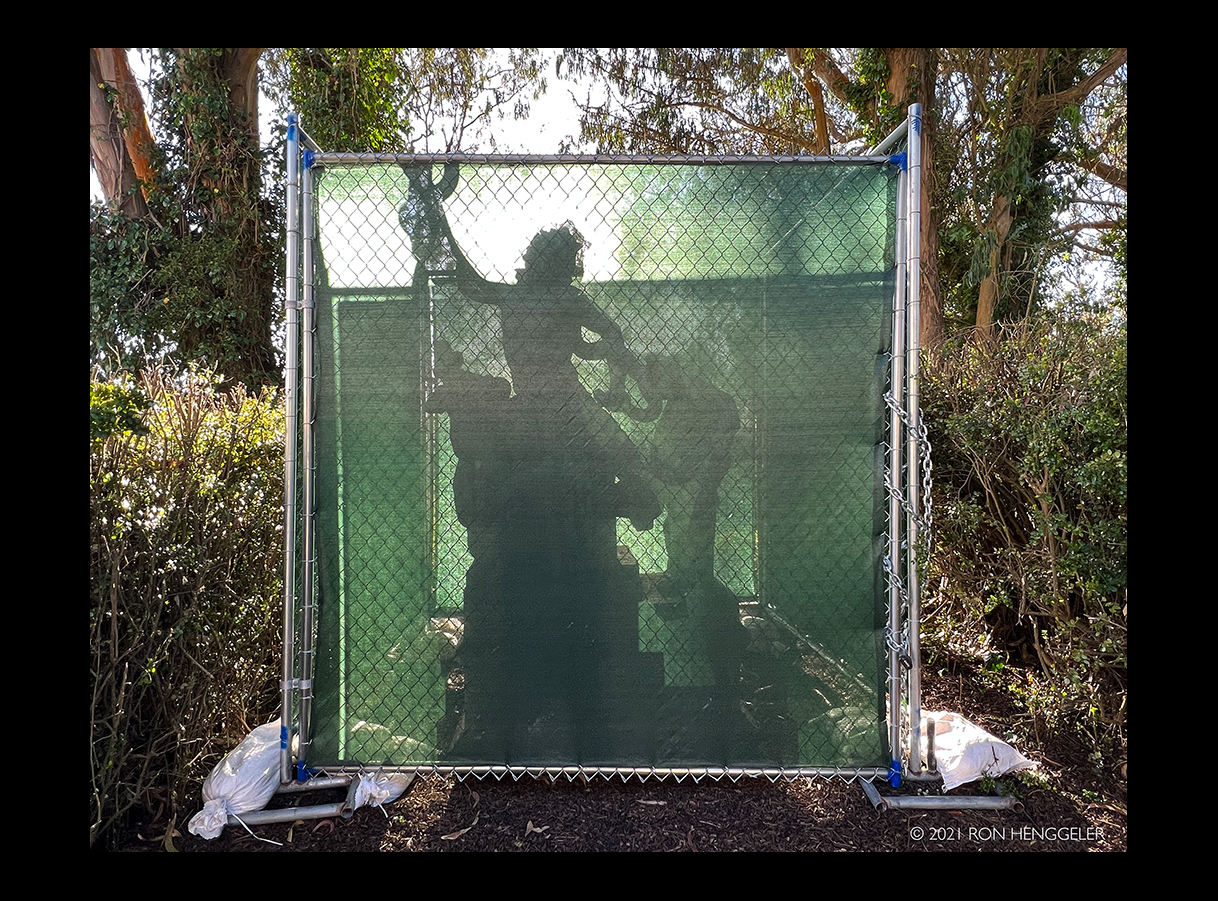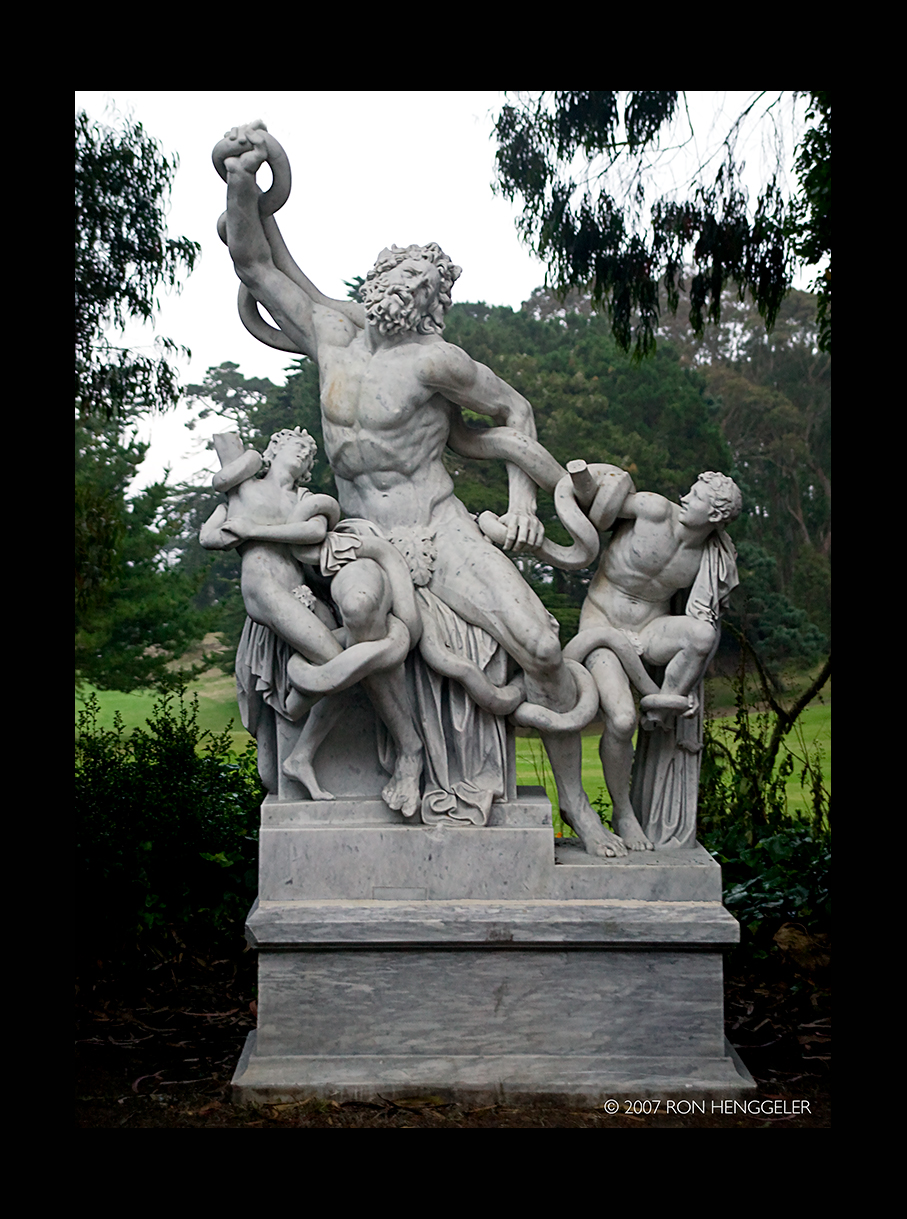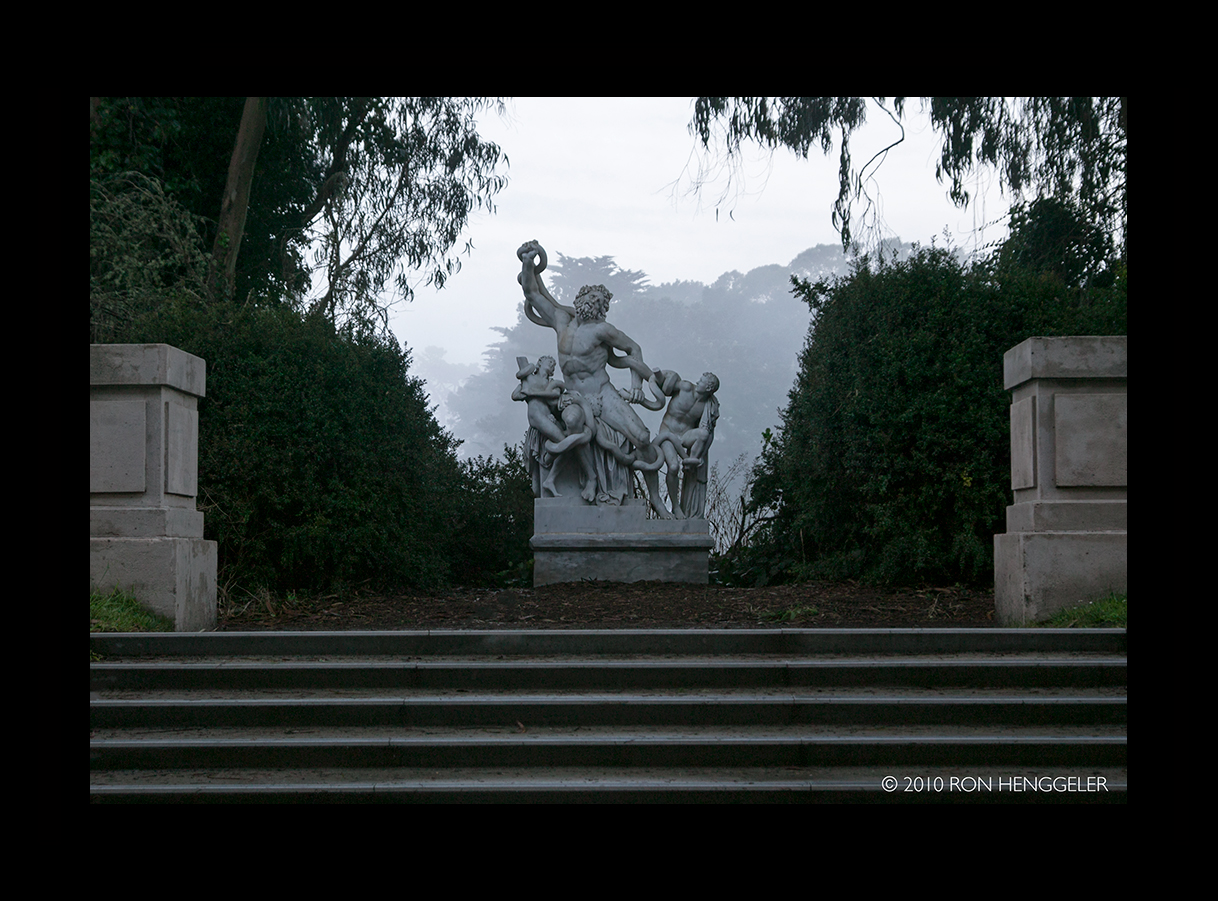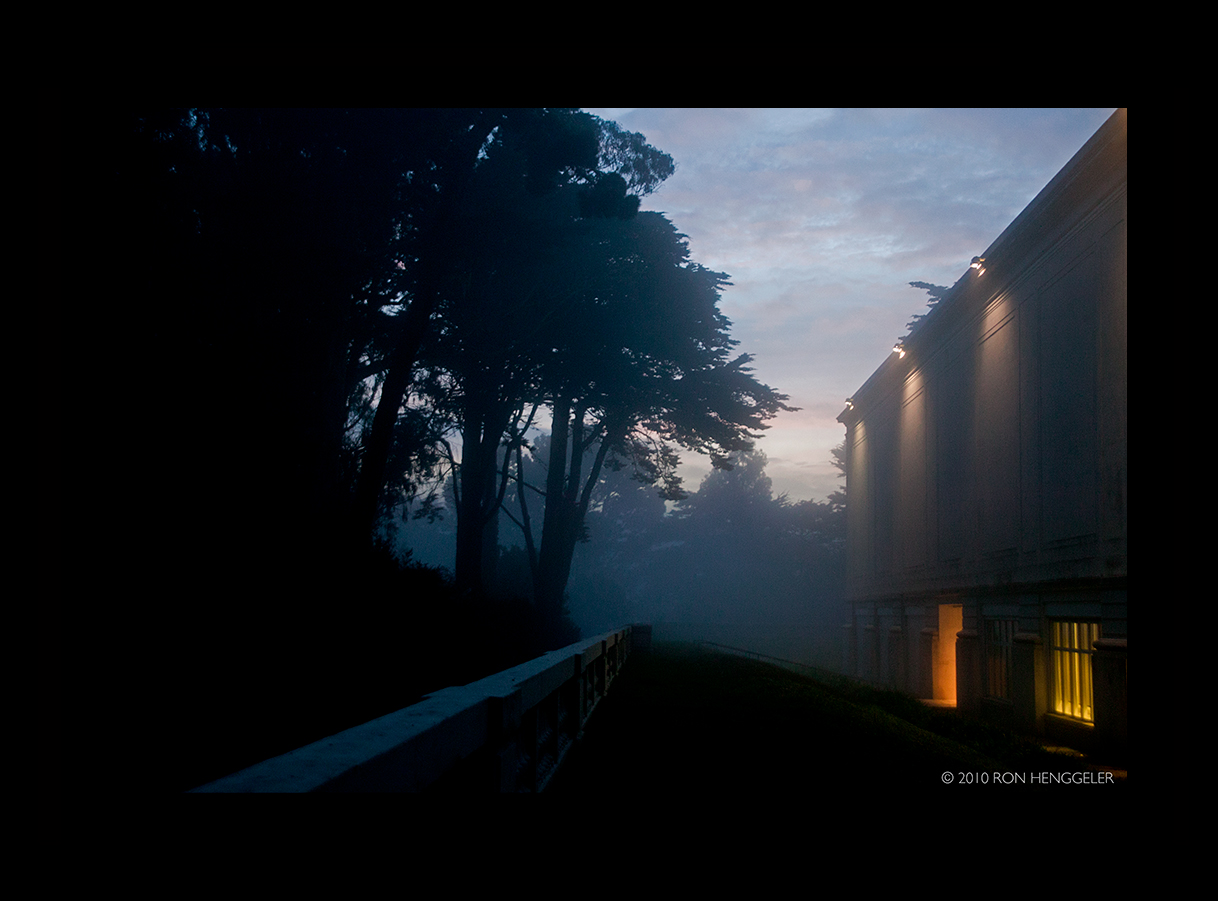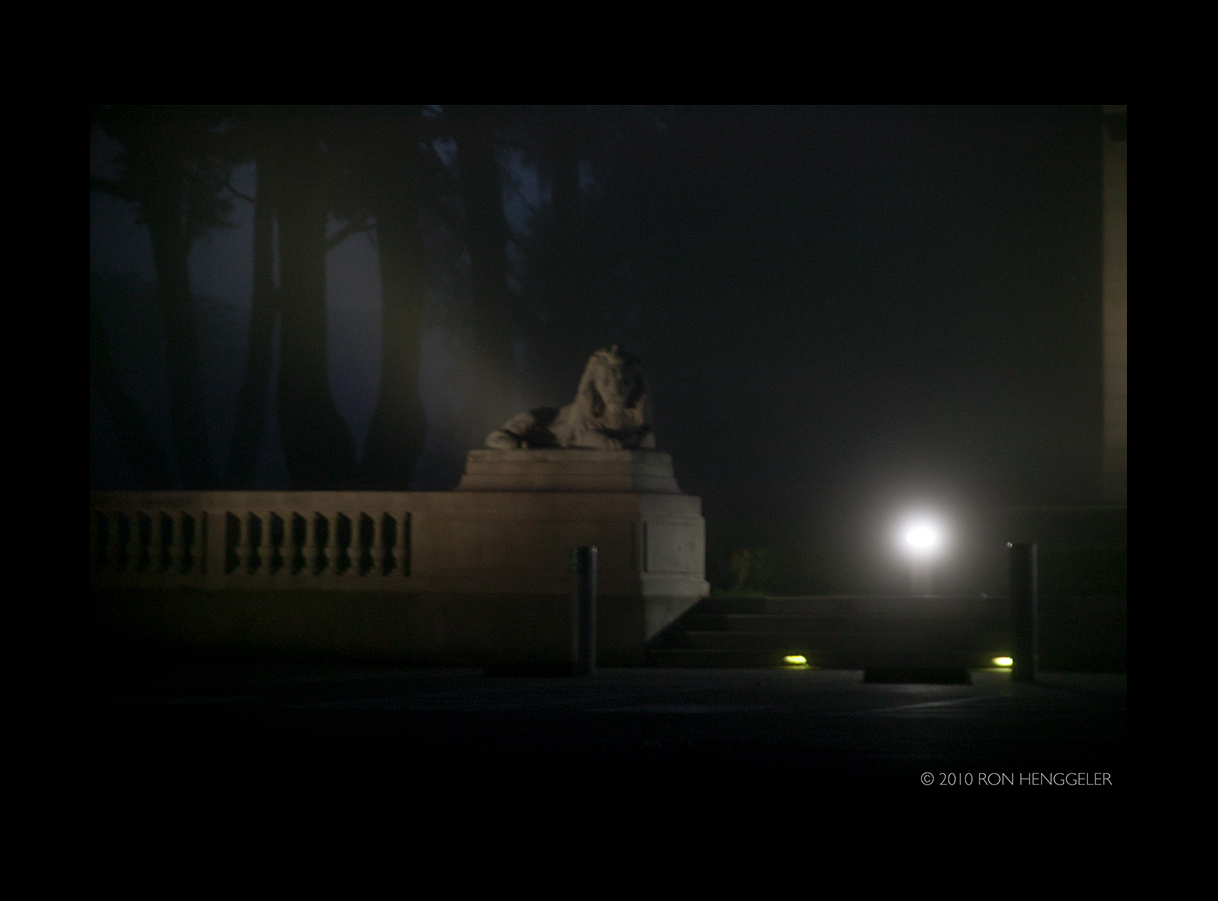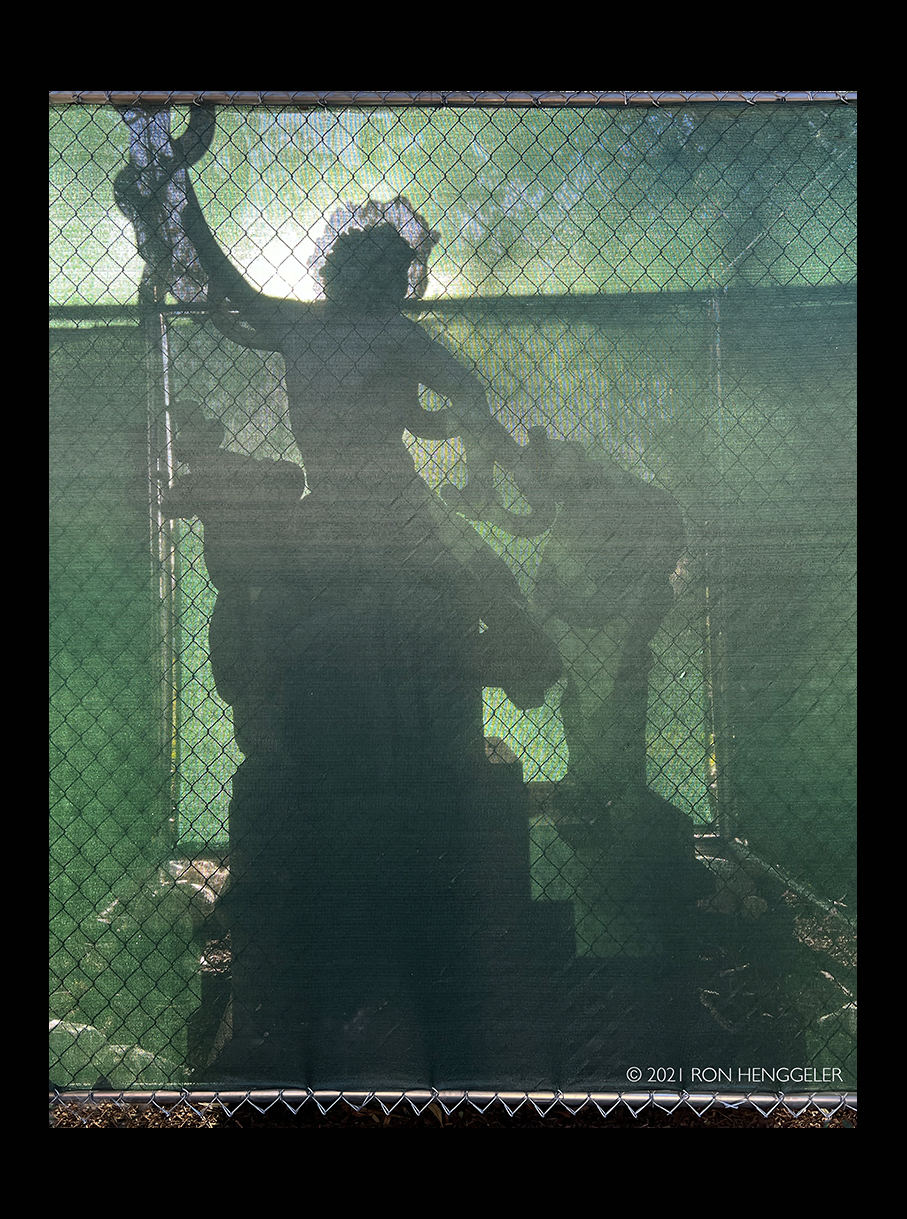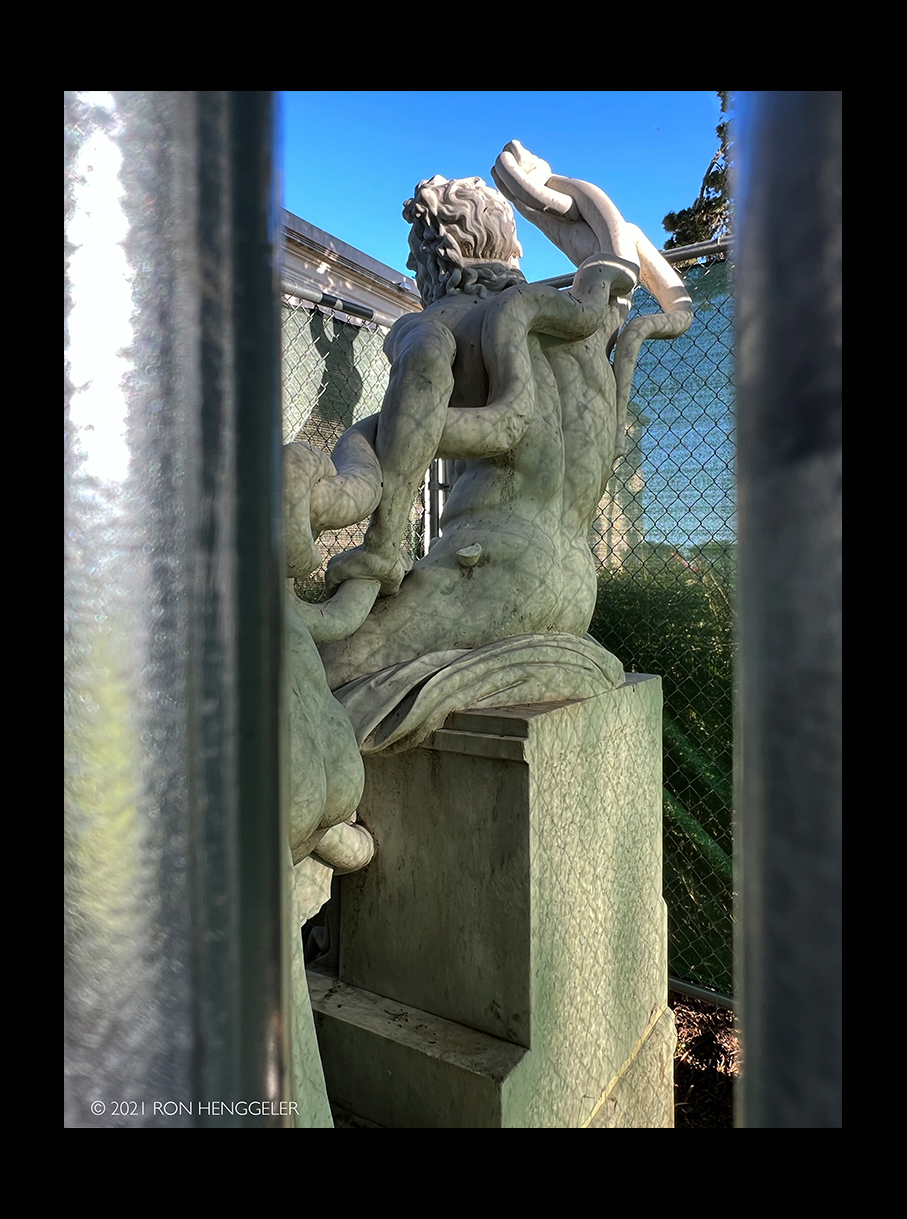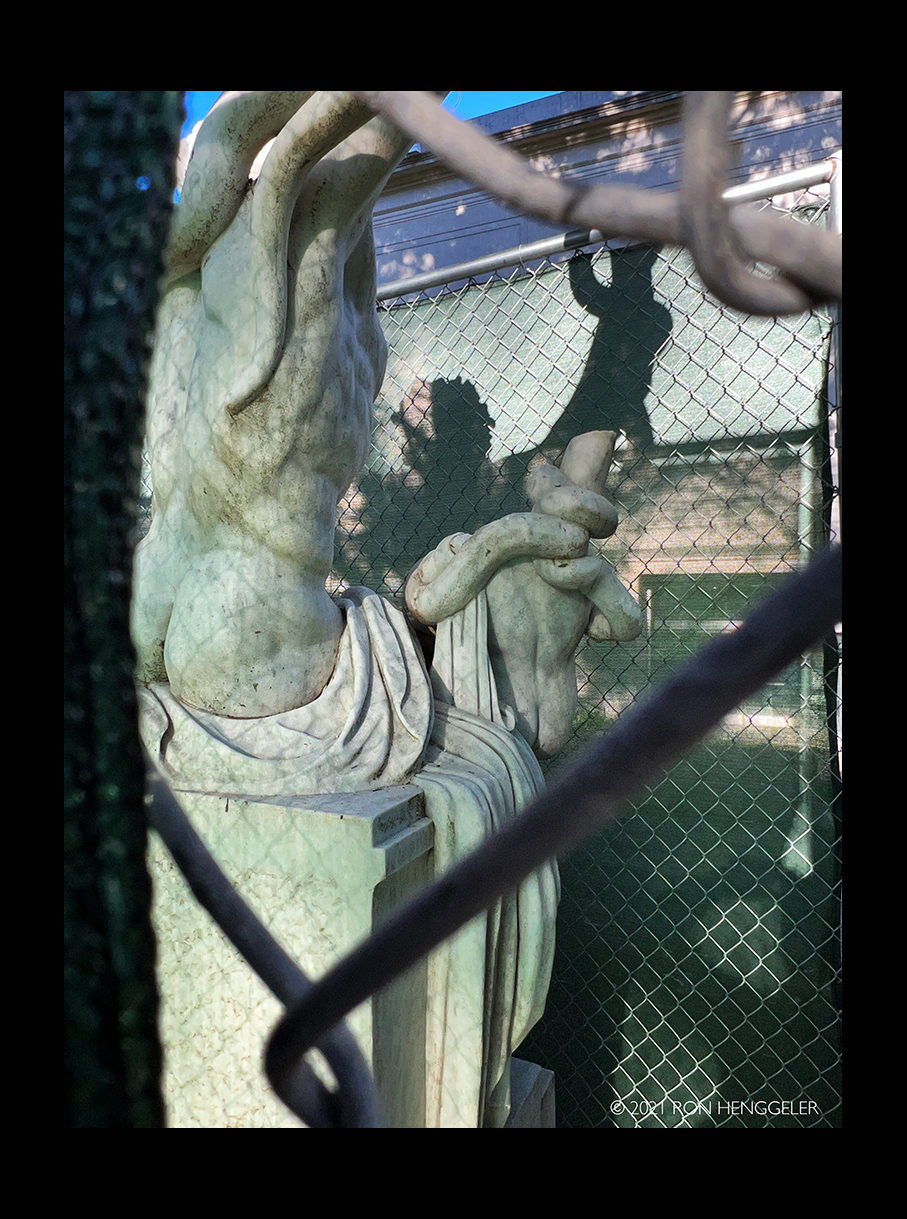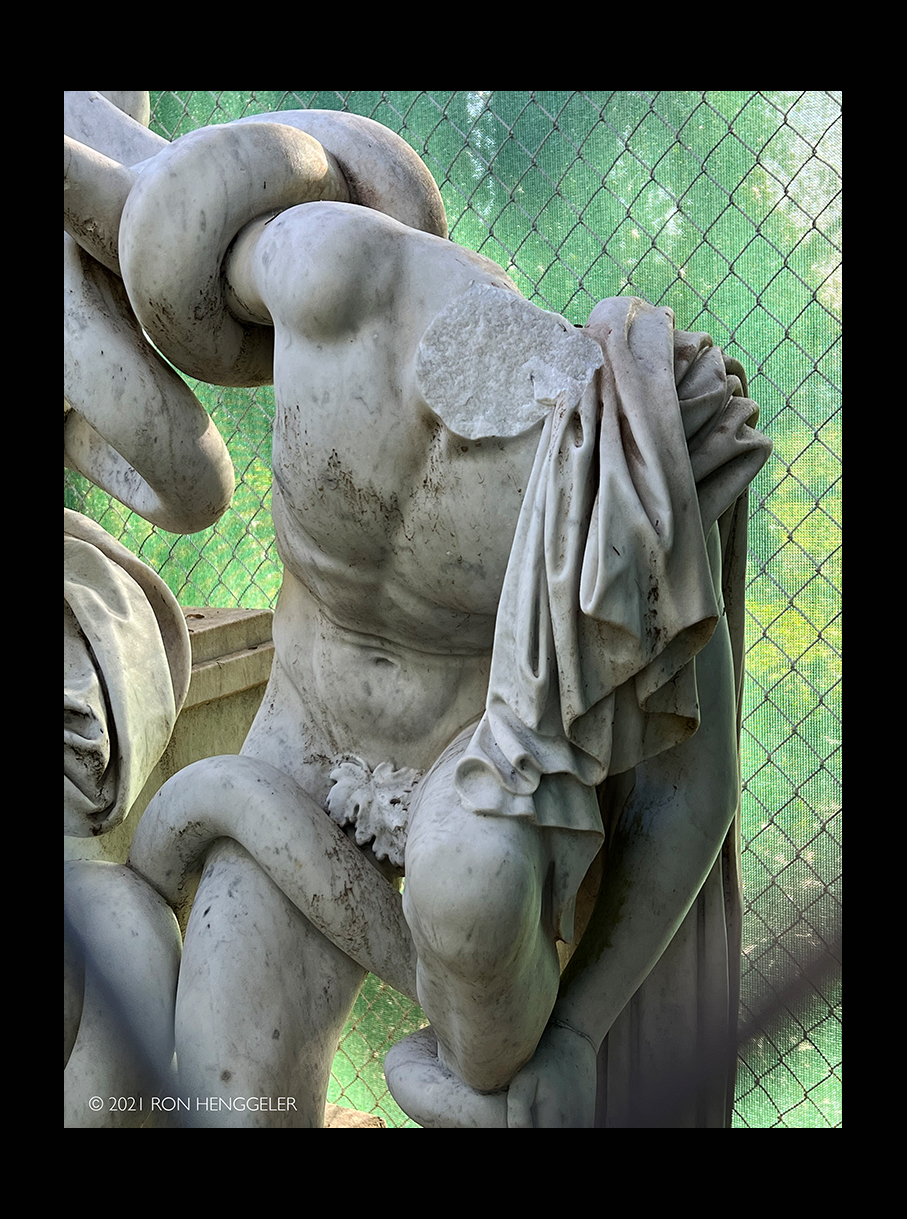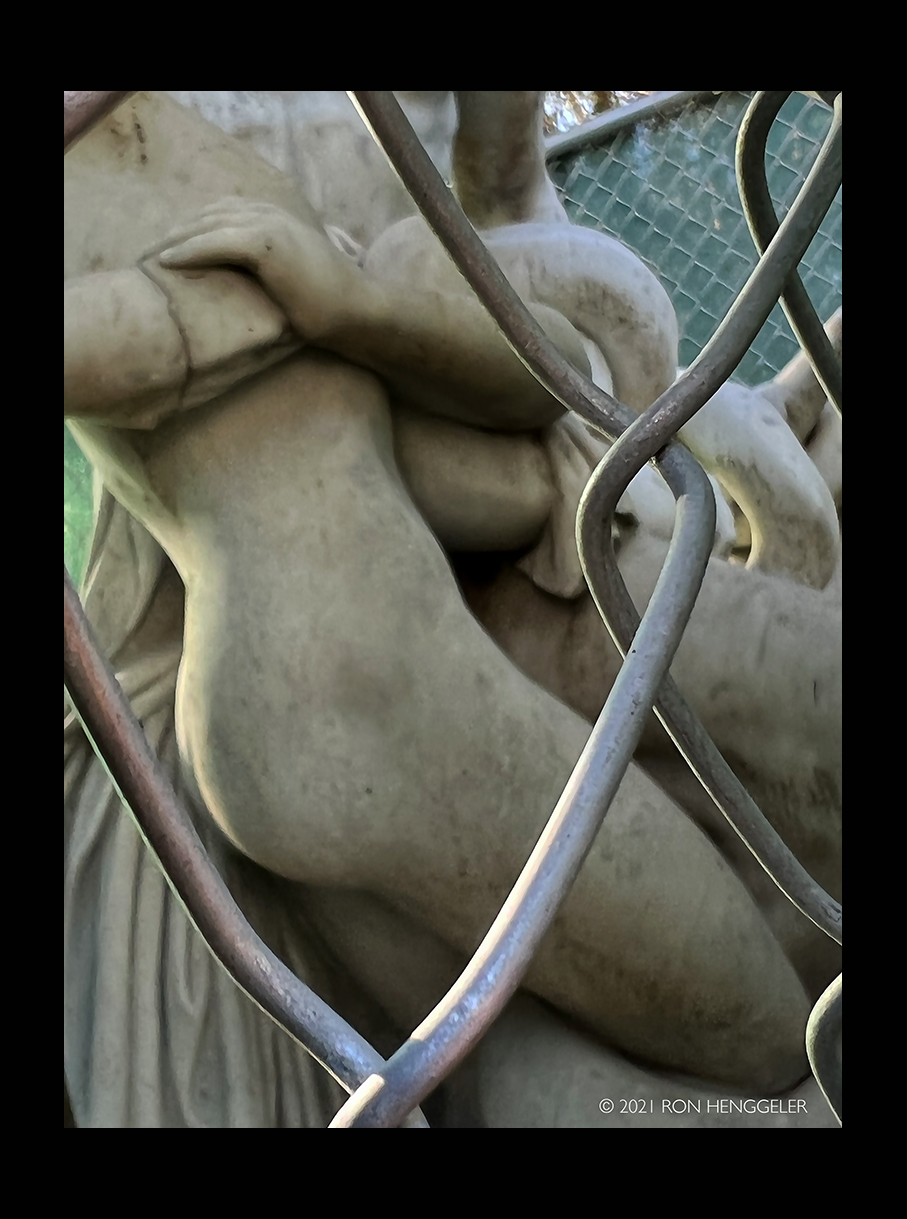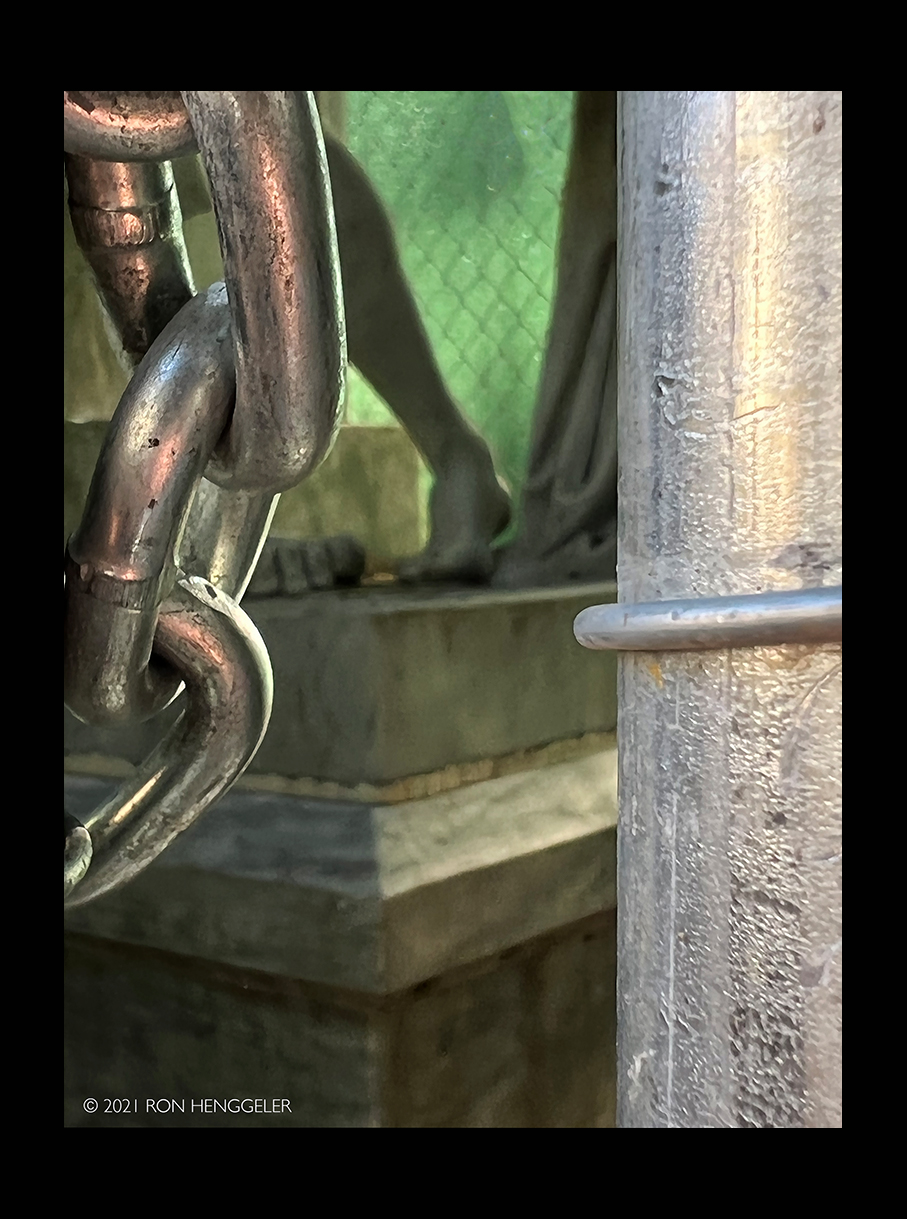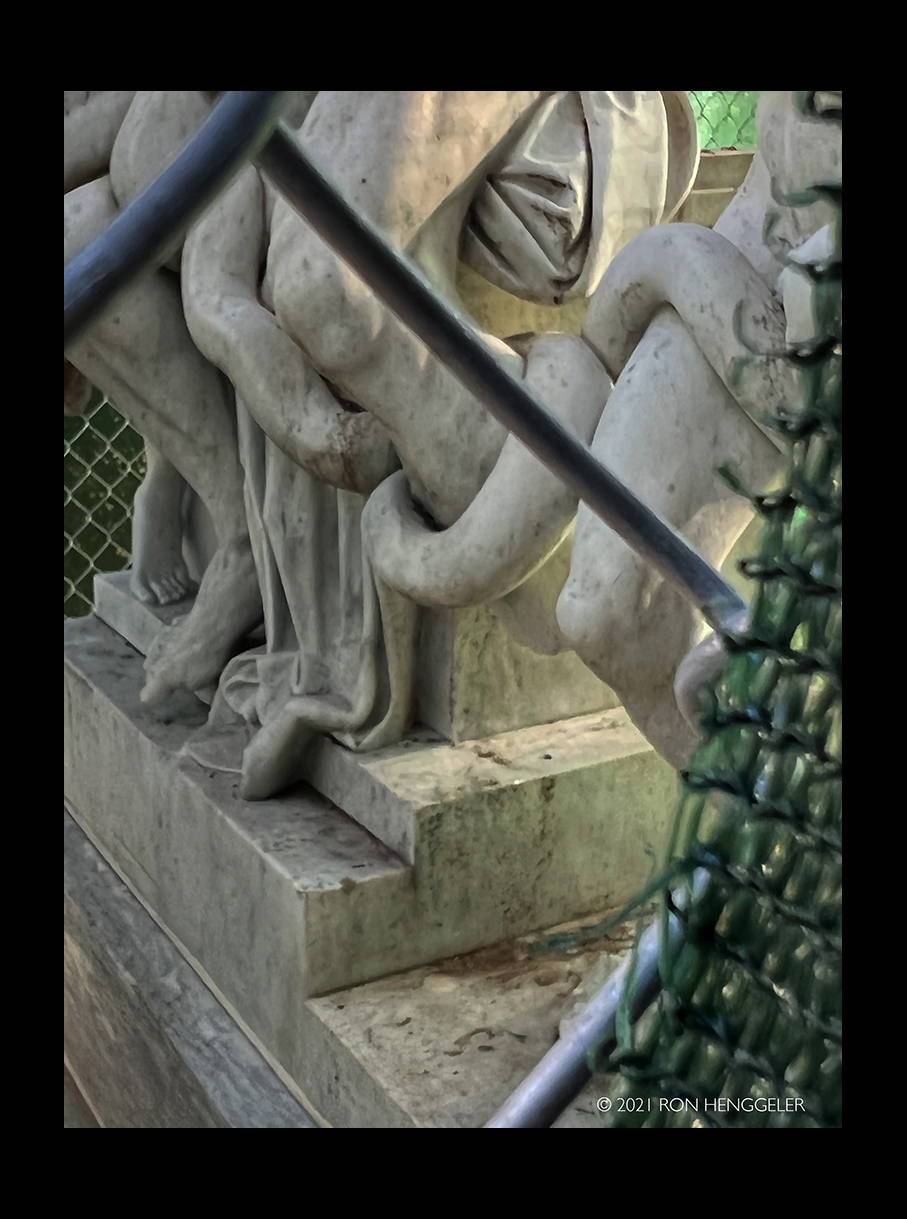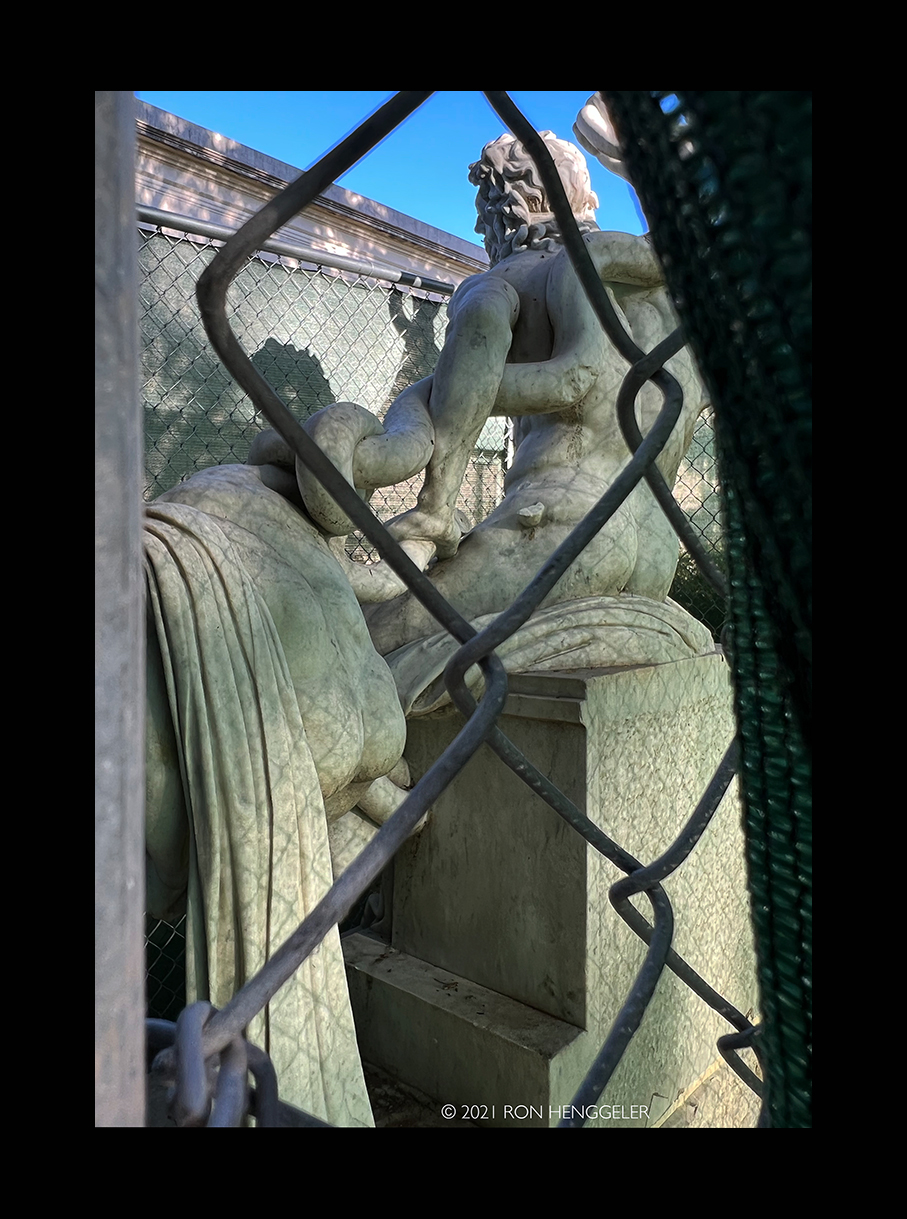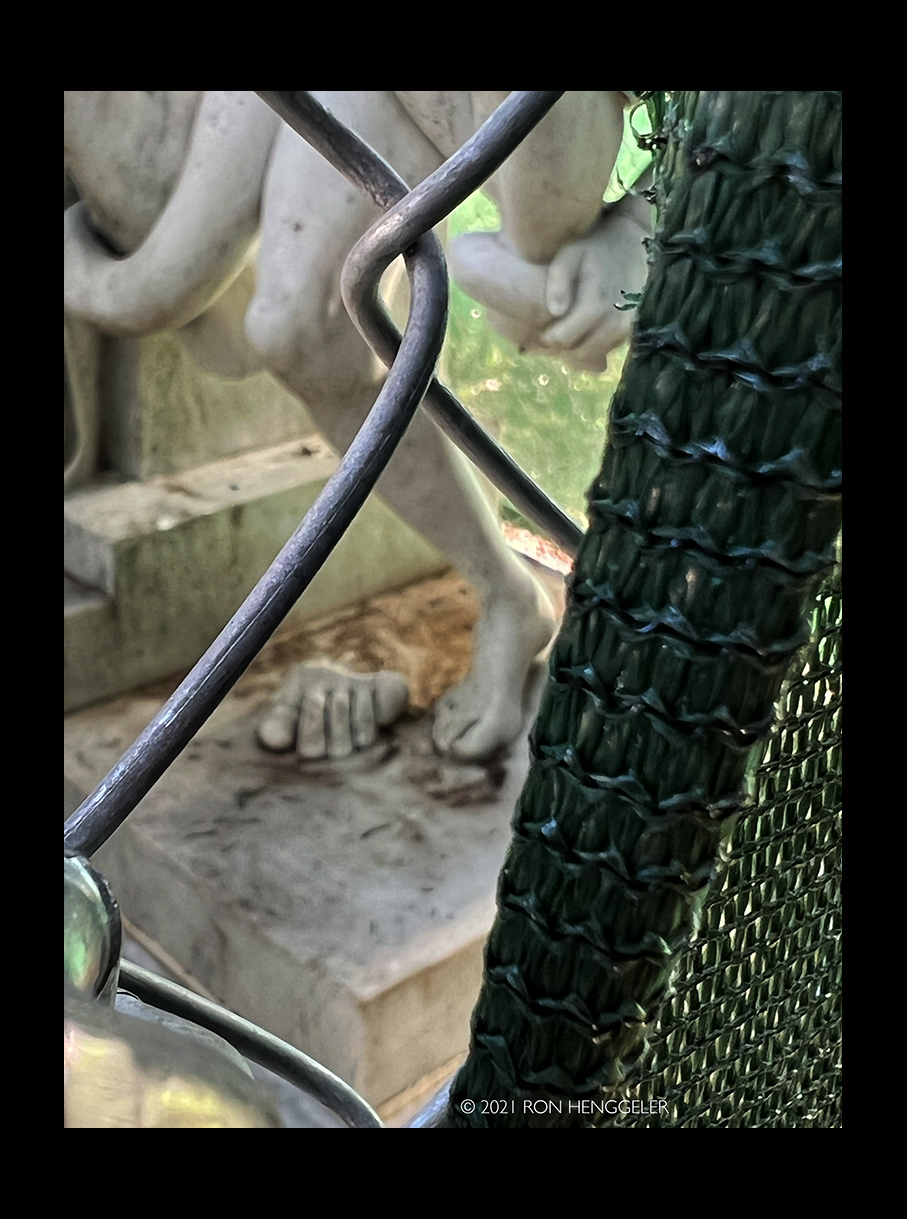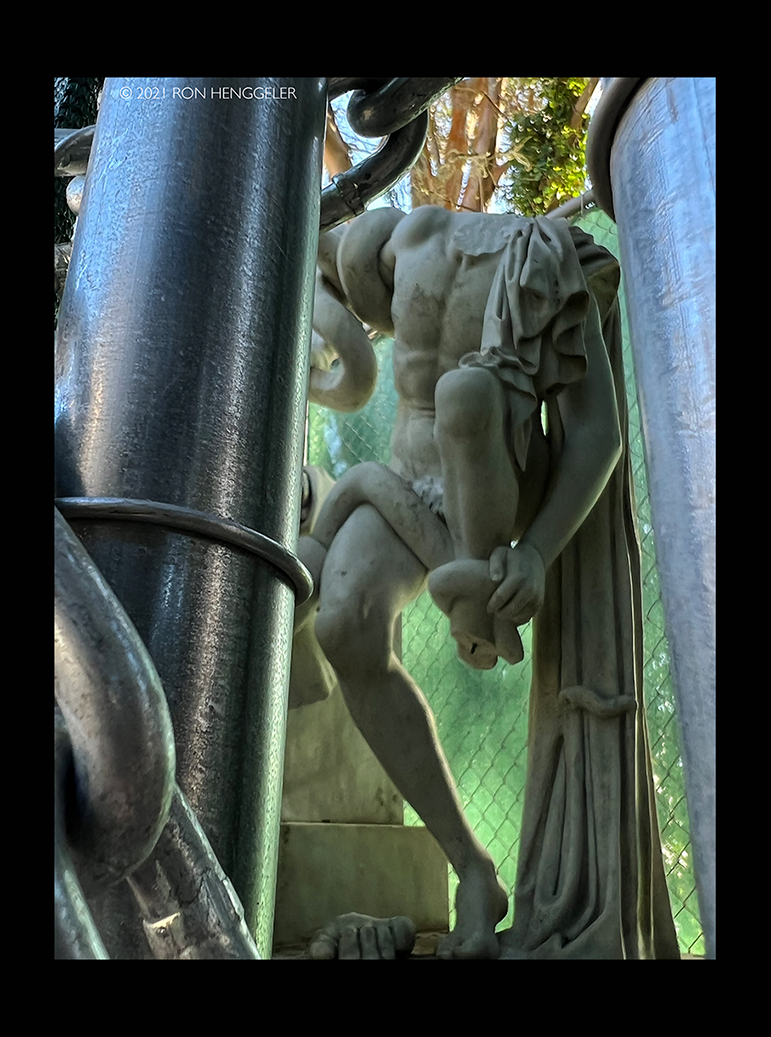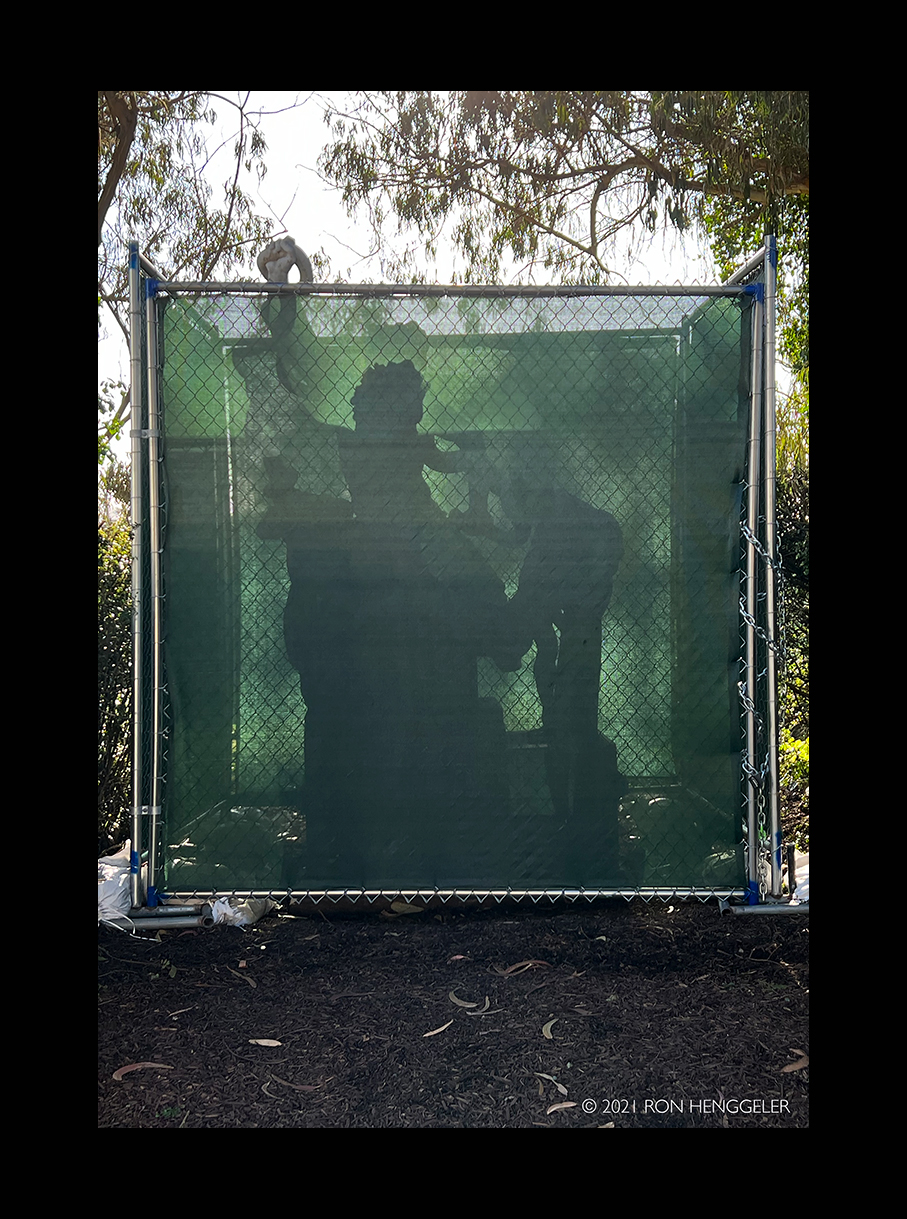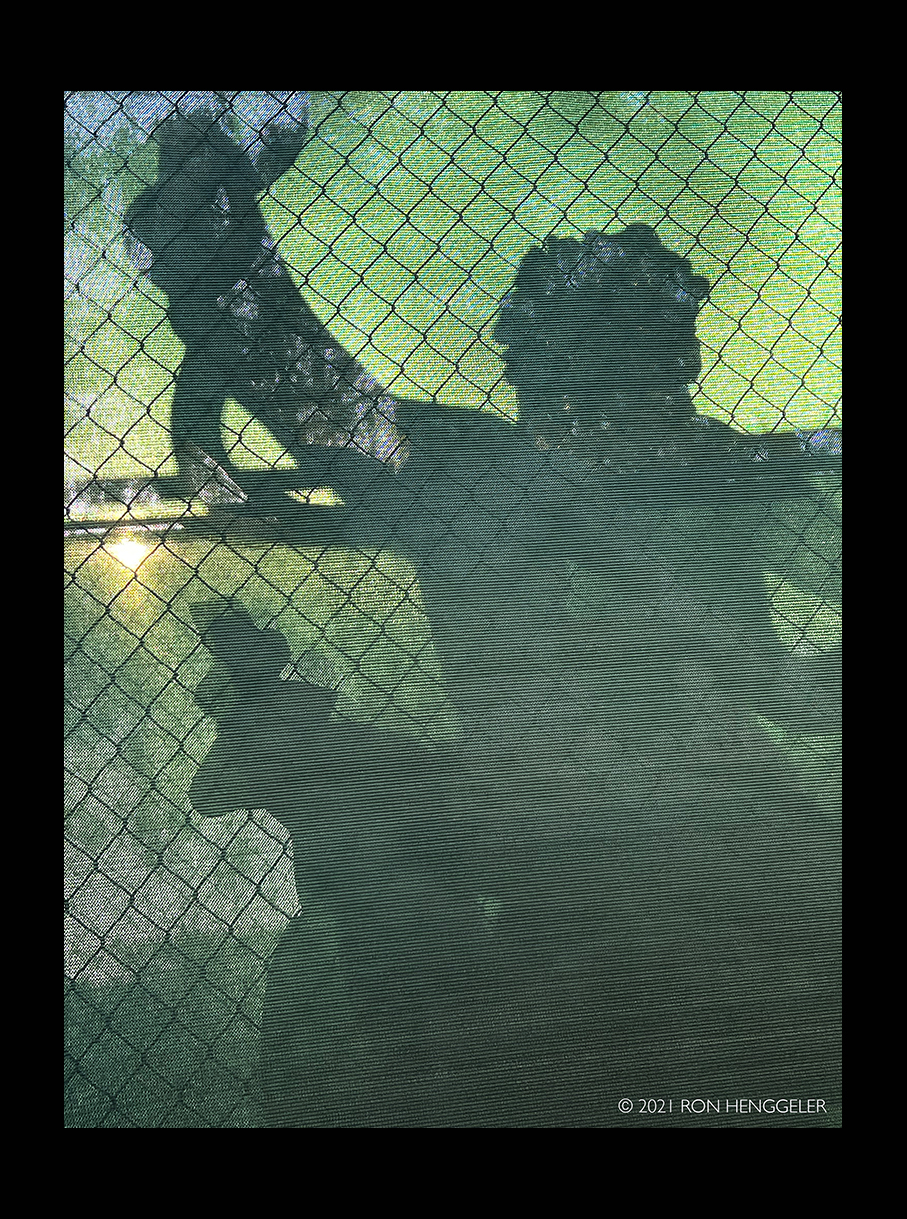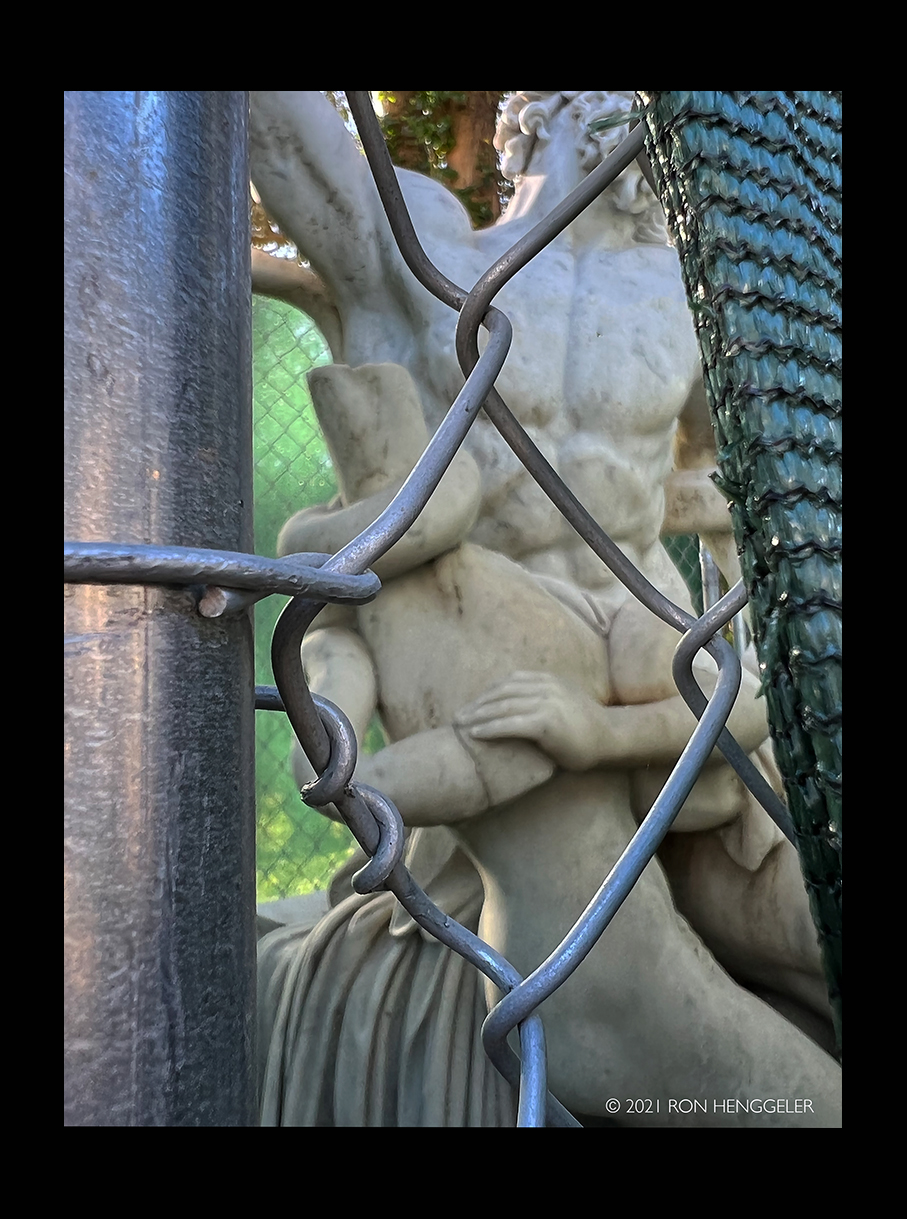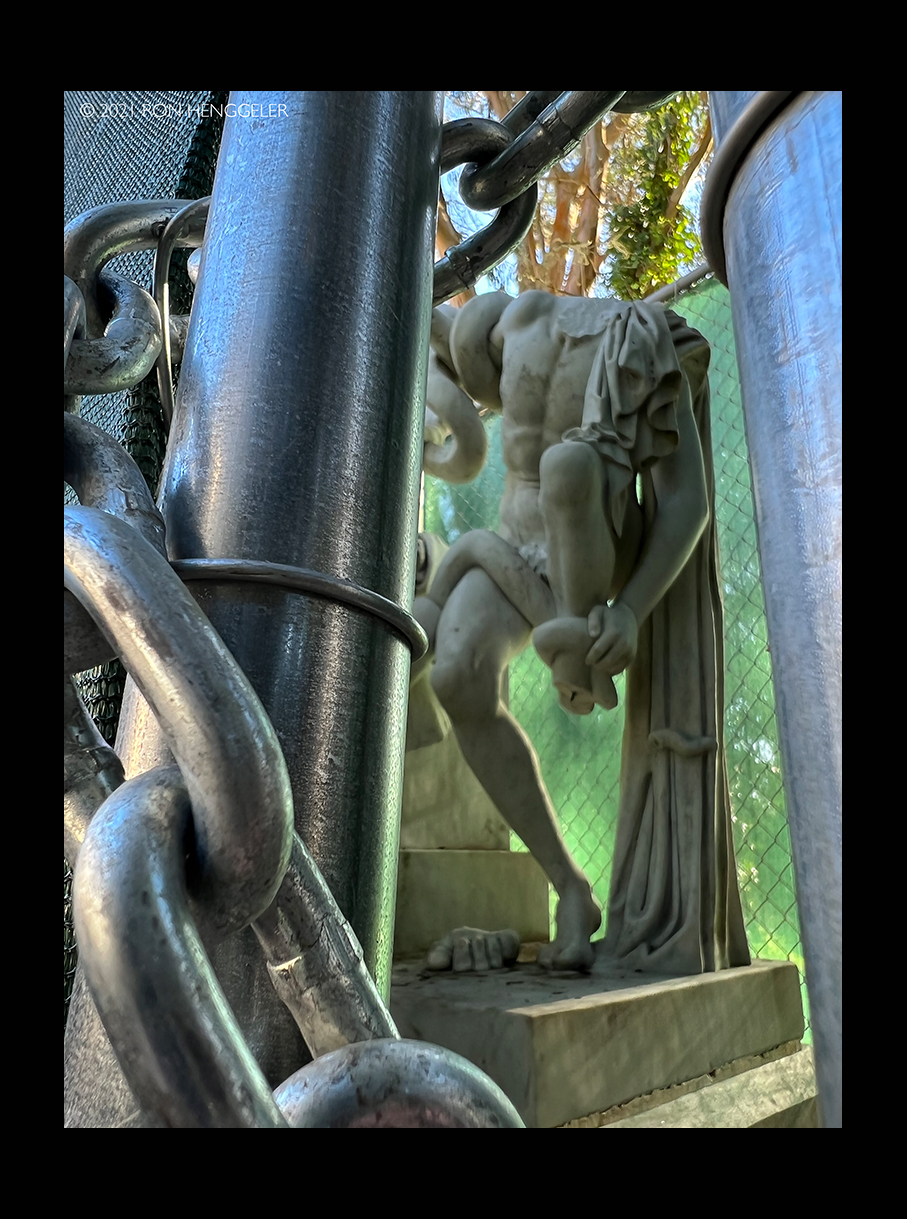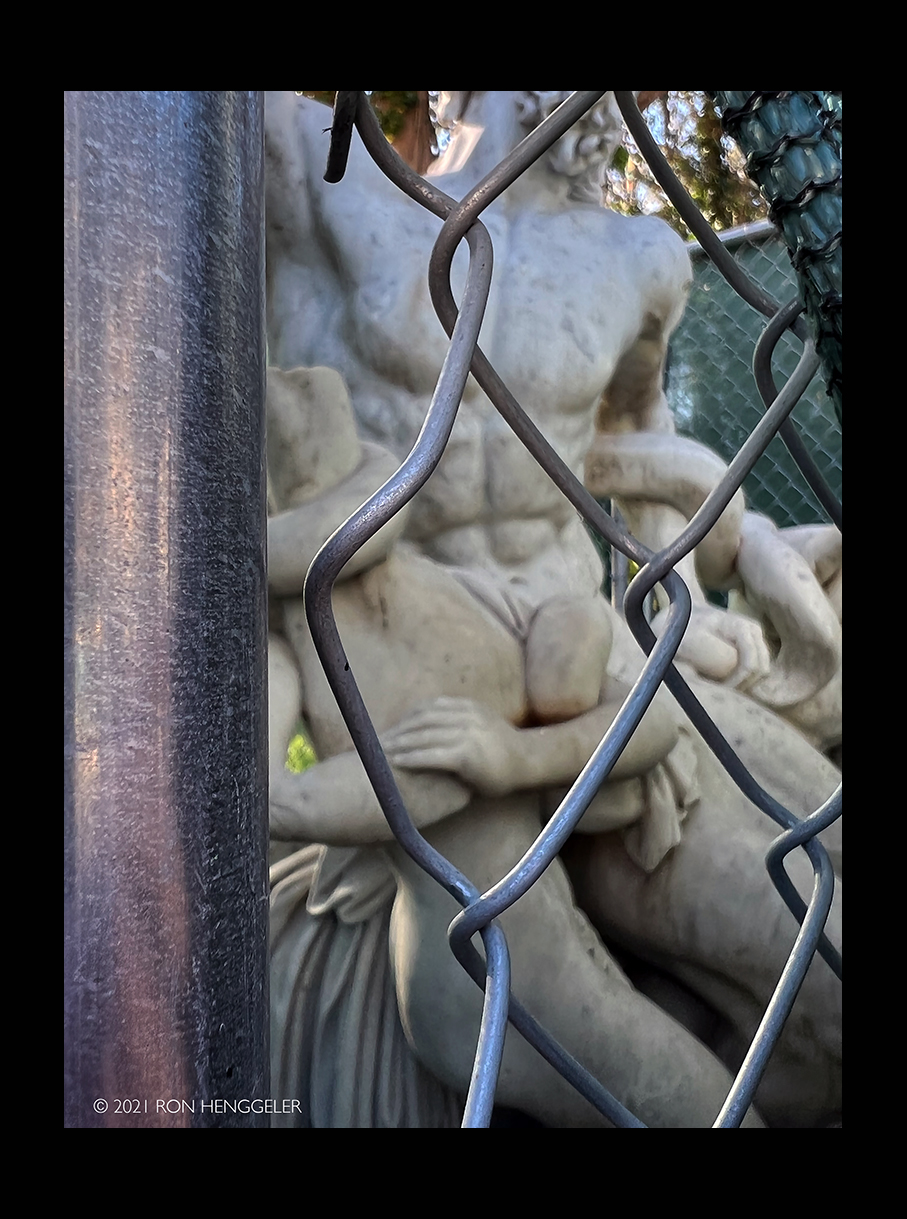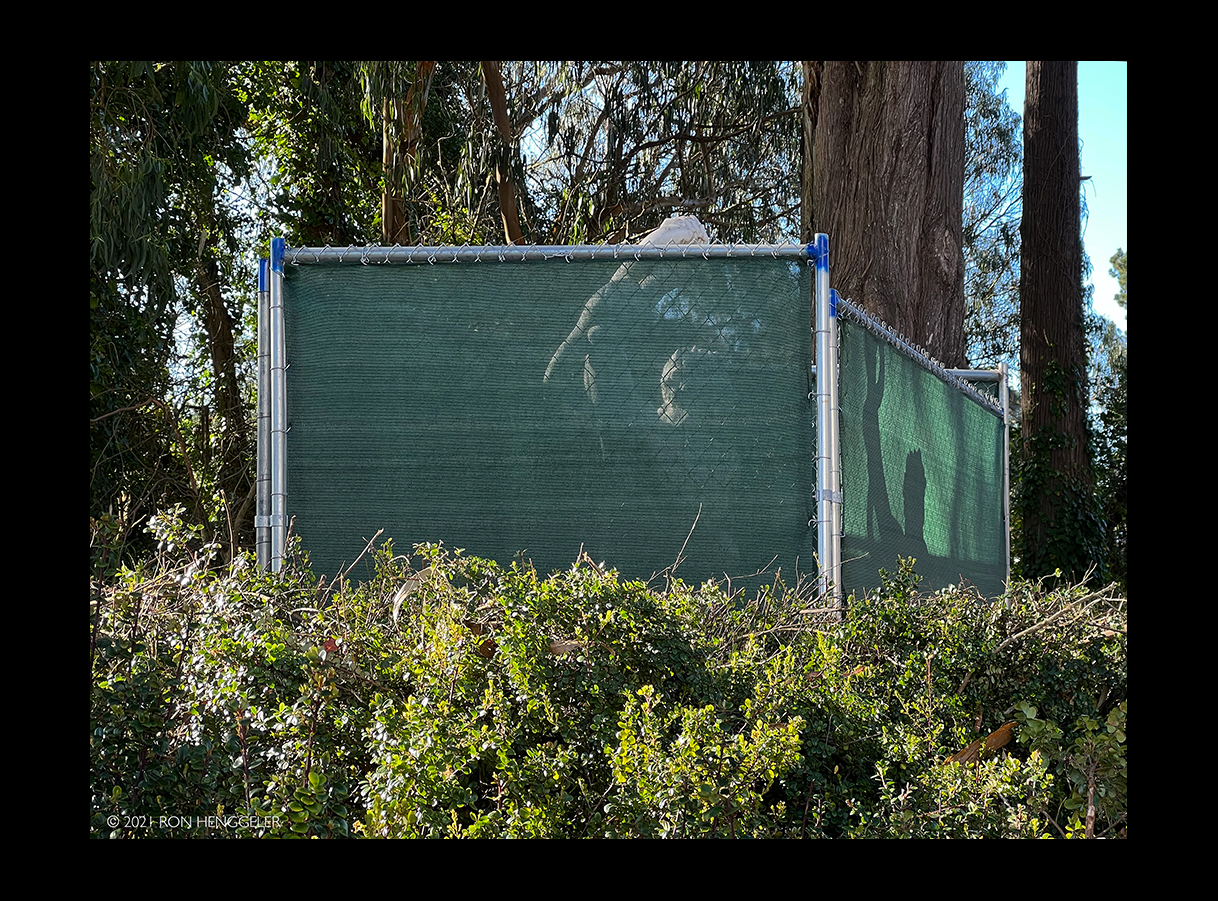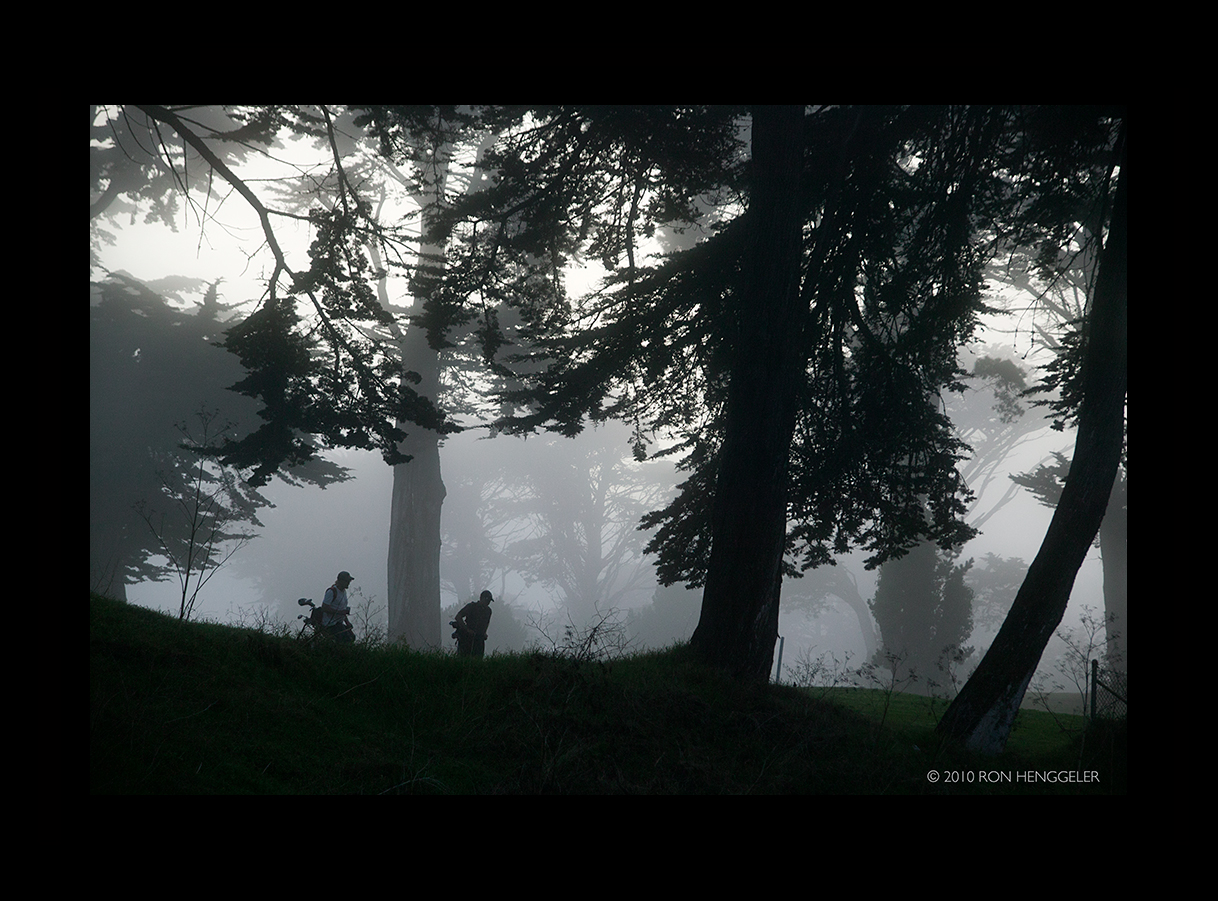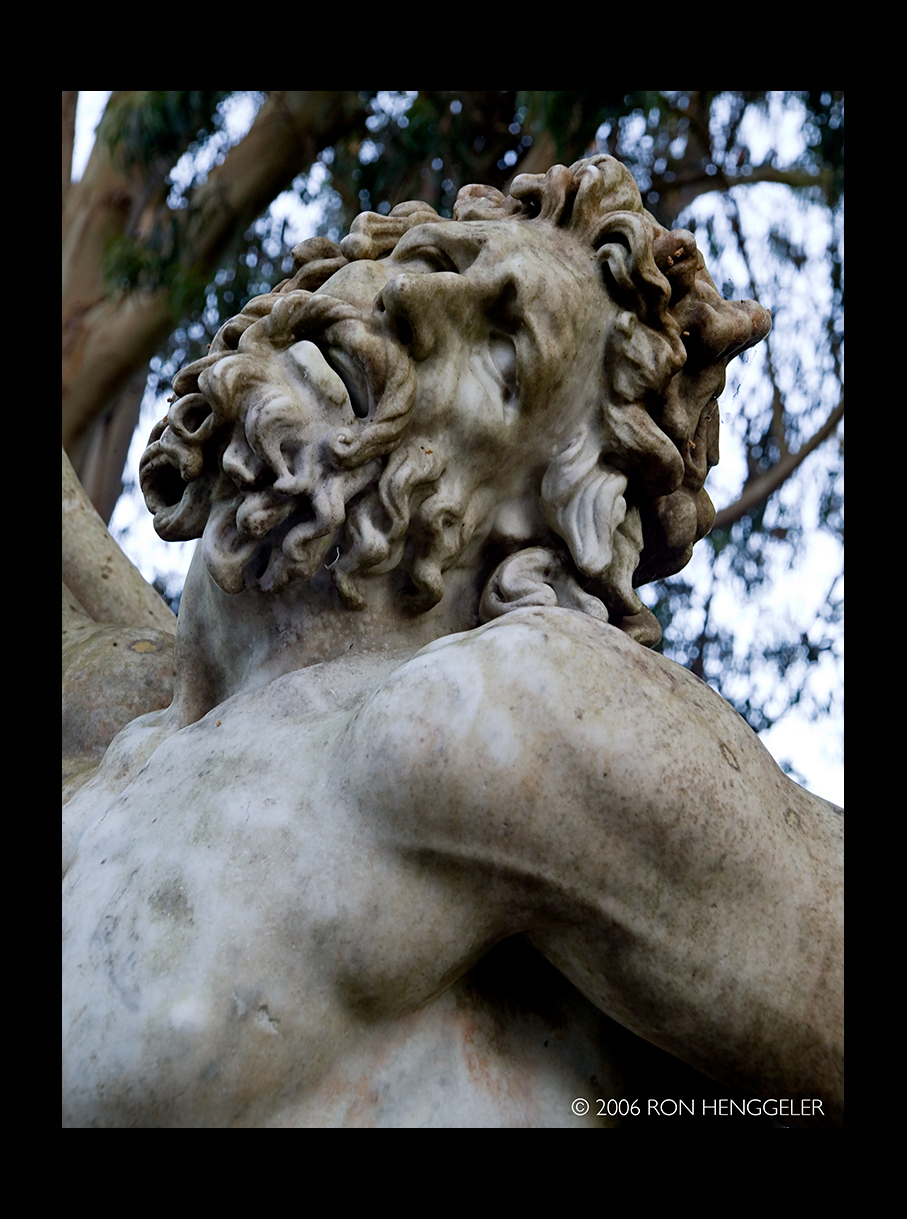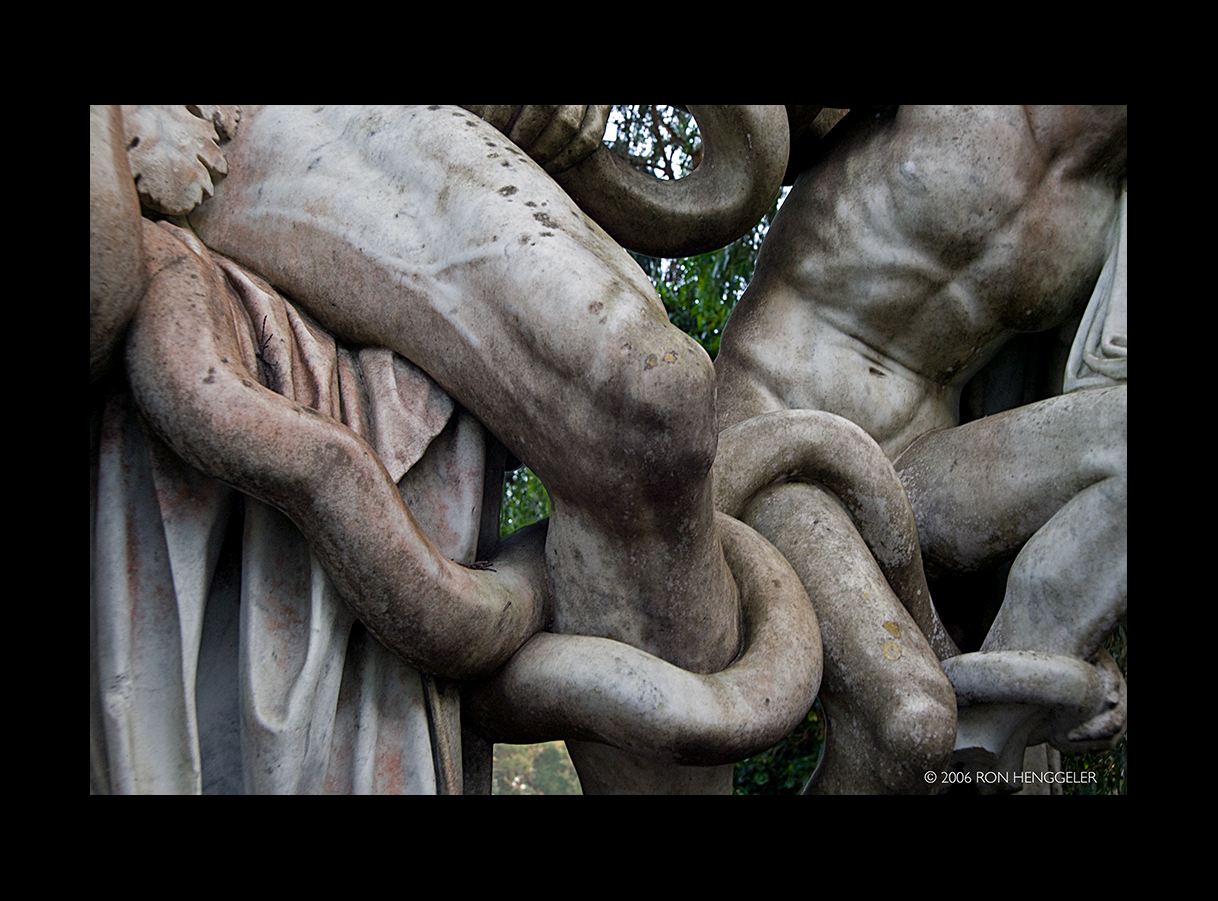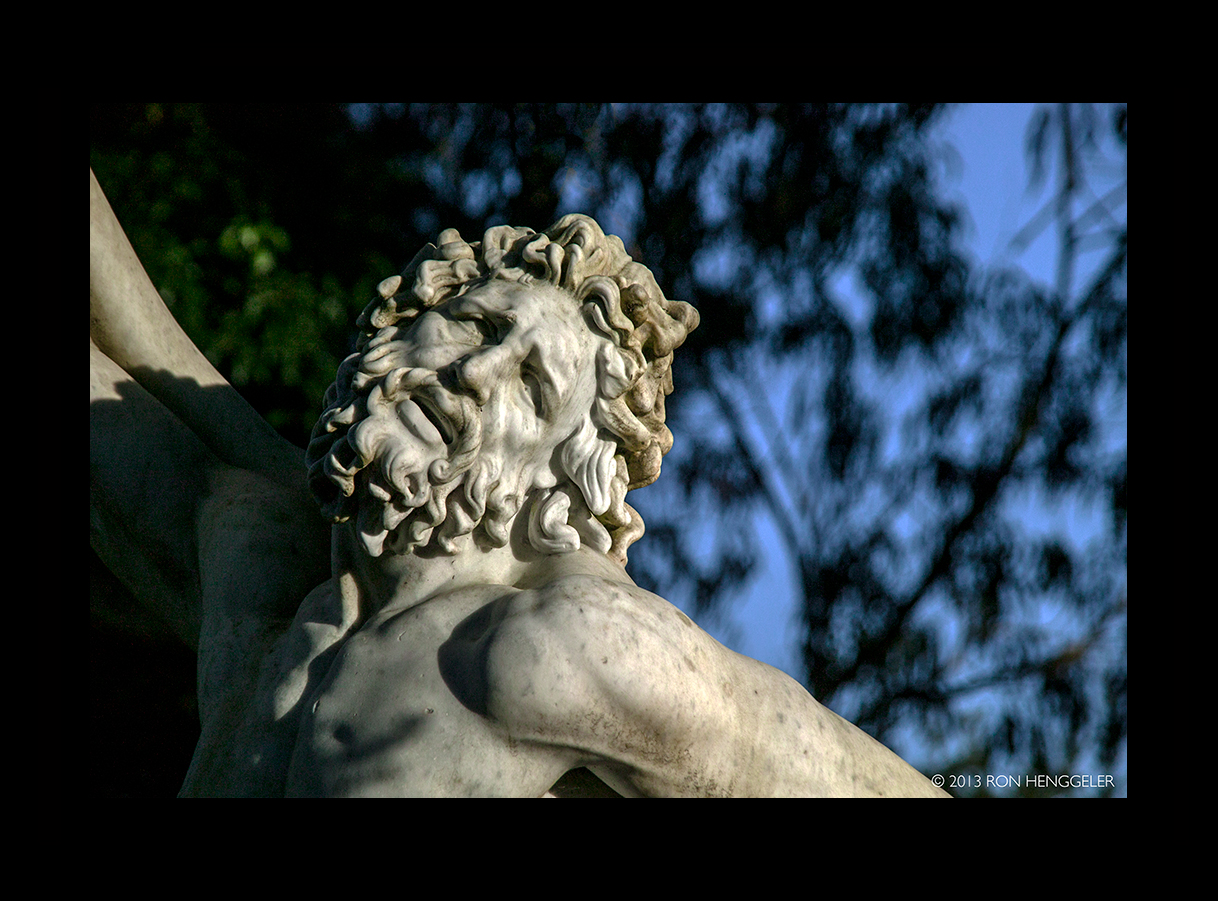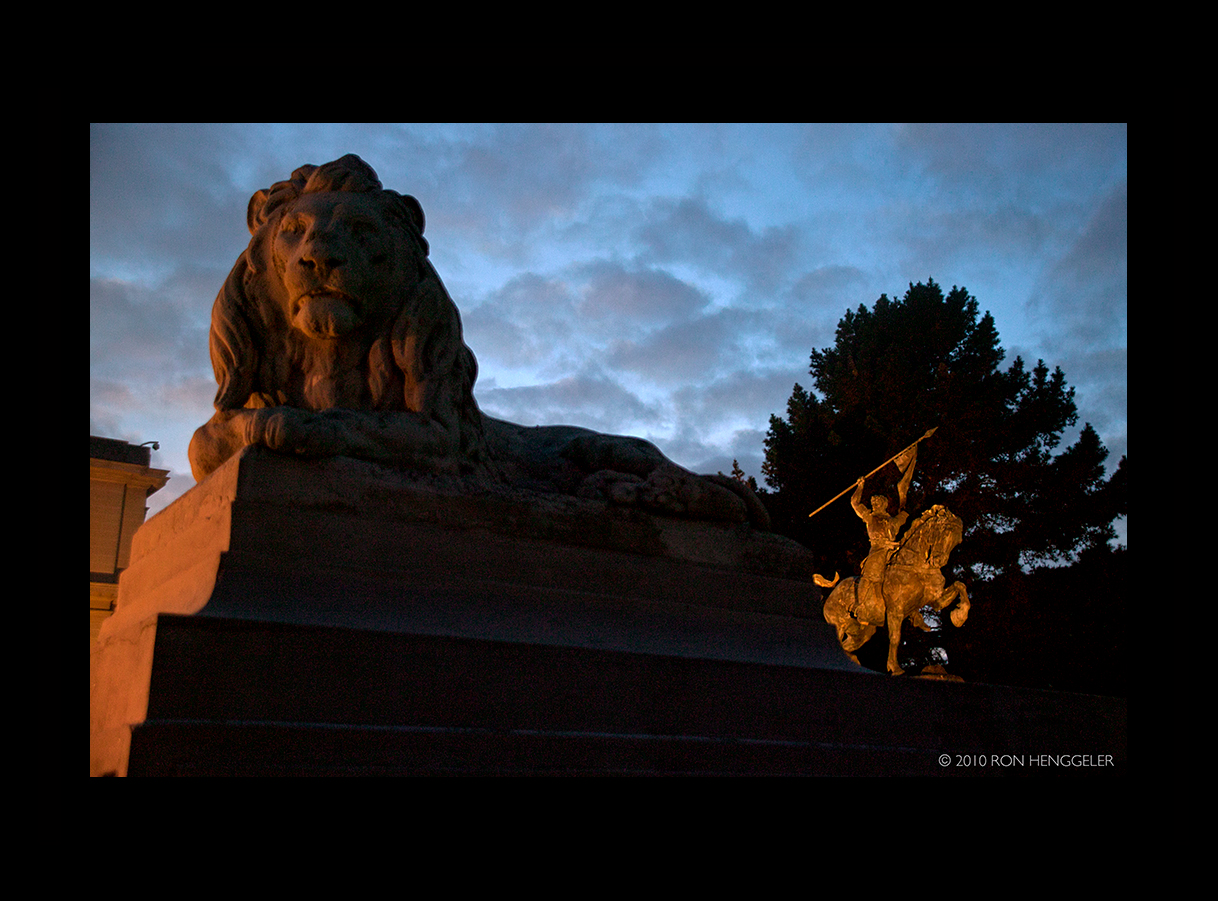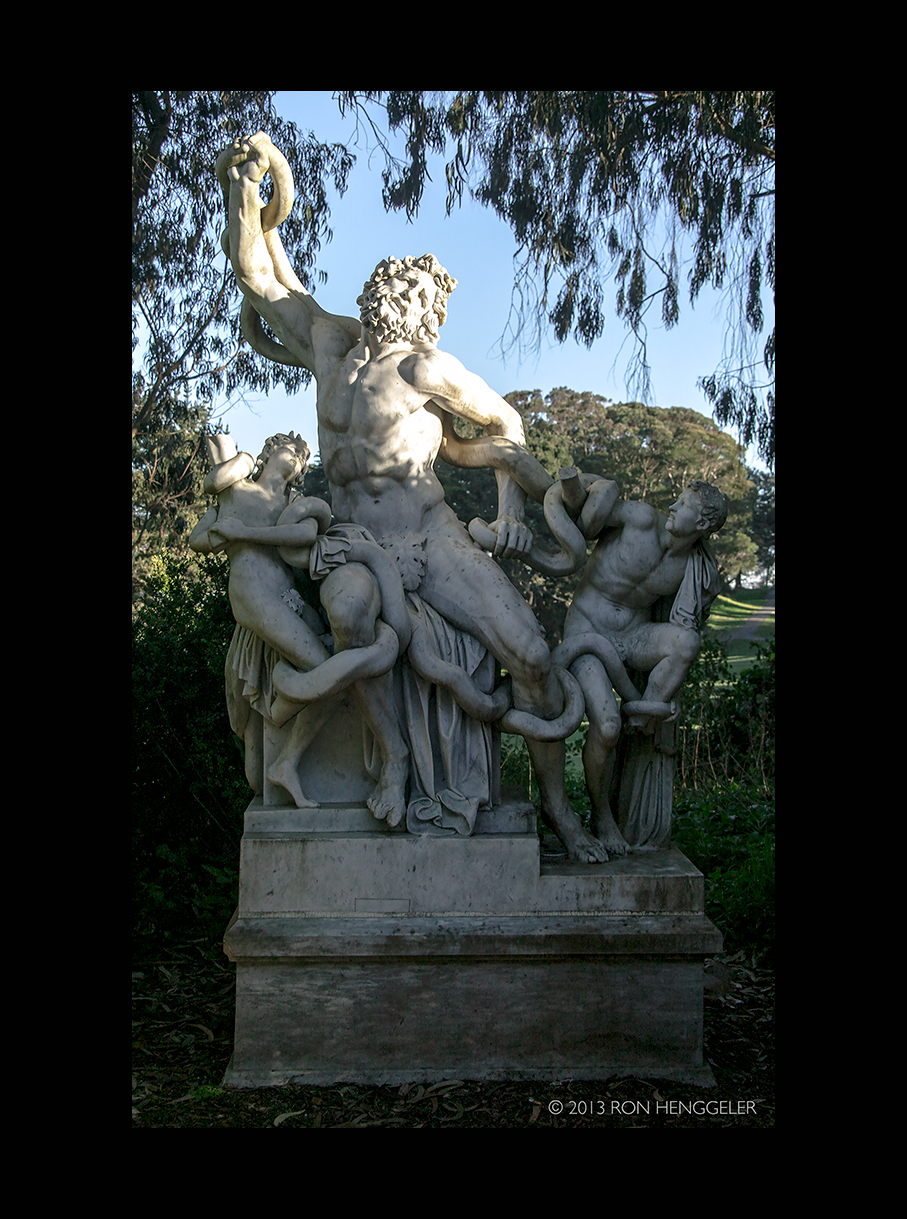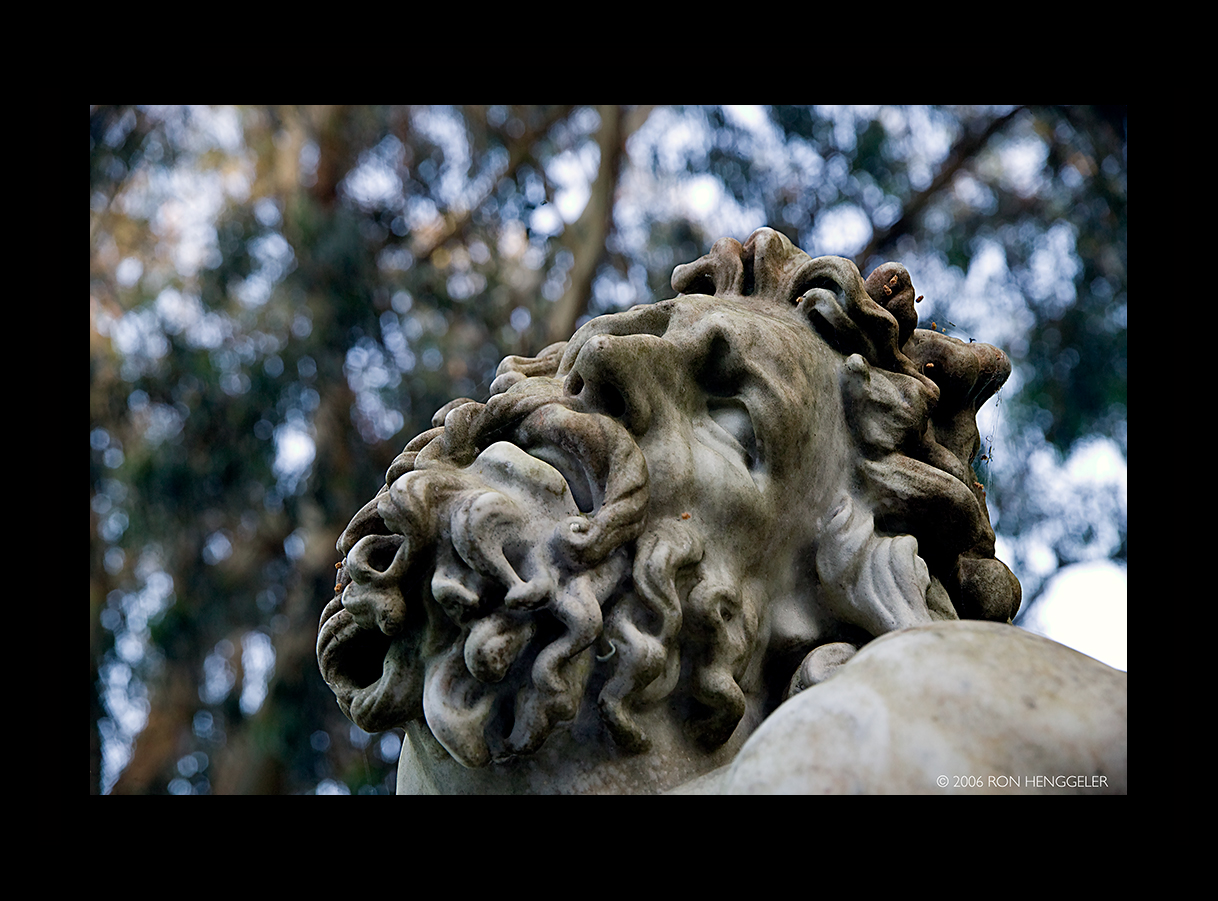RON HENGGELER |
Decemeber 10, 2021
The Laocoön and His Sons Vandalized
One of my favorite statues in San Francisco was recently vandalized.
The statue is the 90-year-old marble sculpture known as "The Laocoön Group". It stands outside the Legion of Honor Museum in San Francisco.
Yesterday morning, I went to the museum at Lincoln Park to see and photograph the damage. Not easy.
Since the vandalism, the museum has surrounded the statue with a cyclone fence covered with fabric.
Here are my photos of Laocoön and his sons, photos from the past, and the present.
Photo from 2007 of Laocoön and His Sons
|
Photo from 2010 |
The side of the Legion of Honor museum where the statue of Laocoön and His Sons stands. |
Nighttime at the Legion of Honor2010 |
Laocoön and His Sons at the Legion of Honor2021 |
The vandals chopped off the heads of the two sons. Part of Laocoön's leg is also missing. |
The photo was shot through a narrow opening at a corner of the cyclone fence. |
Laocoön's (vandalized and now headless) son |
Laocoön's (vandalized and now headless) son |
|
|
|
Laocoön's vandalized and fragmented foot, now missing the leg |
|
Laocoön and His Sonsat the Legion of Honor2021 |
|
Laocoön and His Sons2021 |
Laocoön's (vandalized and now headless) son |
|
Laocoön and His Sons at the Legion of Honor2021 |
Lincoln Park2010 |
Laocoön and His Sons at the Legion of Honor2006 |
Detail of Laocoön and His Sons2006 |
Detail of Laocoön and His Sons at the Legion of Honor2013 |
Entrance to the Legion of Honor at Lincoln Park in San Francisco2010 |
Legion of Honor at Lincoln Park in San Francisco2010 |
Laocoön in Greek Mythology
|
|
The author Gray Brechin sent this to me in response to receiving my photo newsletter about the vandalized Laocoön.The beginning is bloodless, the evidence circumstantial. Molecular civil war starts unnoticed; there is no general mobilization. The amount of rubbish on the side of the streets increases gradually. Piles of syringes and broken bottles appear in the park. Monotonous graffiti is daubed on the walls, its only message one of autism. Classroom furniture is smashed up, front gardens stink of shit and urine — fine, muted declarations of war which any experienced city-dweller can interpret. Soon, the signs become clearer. Tyres are slashed, emergency telephones have their cables cut, cars are set on fire. In one spontaneous incident after another, rage is vented on anything undamaged, hate turns on anything that works, and forms an insoluble amalgam with self-hate.Hans Magnus Enzensberger, Civil Wars: From L.A. to Bosnia, New York (The New Press), 1994.
|
Newsletters Index: 2021 2020, 2019, 2018, 2017, 2016, 2015, 2014, 2013, 2012, 2011, 2010, 2009, 2008, 2007, 2006
Photography Index | Graphics Index | History Index
Home | Gallery | About Me | Links | Contact
© 2020 All rights reserved
The images oon this site are not in the public domain. They are the sole property of the
artist and may not be reproduced on the Internet, sold, altered, enhanced,
modified by artificial, digital or computer imaging or in any other form
without the express written permission of the artist. Non-watermarked copies of photographs on this site can be purchased by contacting Ron.
